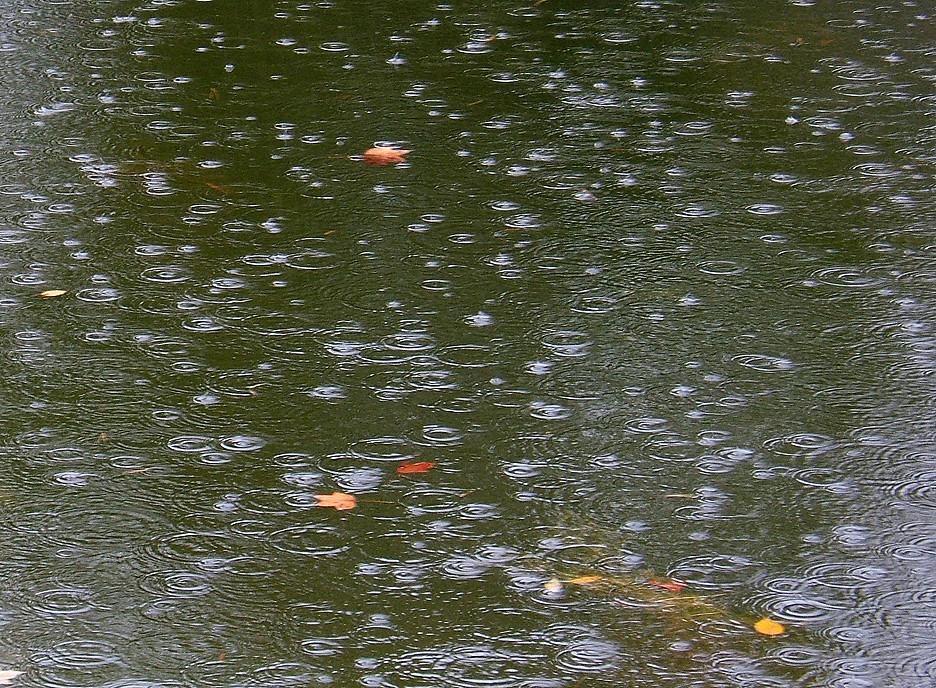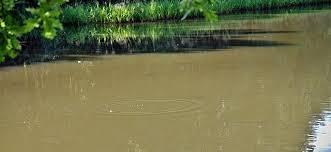Why do chemicals in the Pond fluctuate?
.jpg)
While the chemical changes of your pond are not visible, if you experience any problems with your pond you must test the water to check if the pond is balanced. We have listed a few blog posts below which outline common pond problems.
• Common Pond Discolouration Problems
• Signs of Low Oxygen in Ponds
• Why Temperature plays a big role in Pond Development
You should also be on the look out for any of the following symptoms in your fish, as they may indicate a problem with your pond.
• Sudden death of fish or wildlife.
• Fish resting at the bottom of the pond.
• Fish gasping for air at the surface.
• Excess algae blooms.
• Lethargic fish.
• Damaged pond plants.
• Changes in water clarity.
• Pond Odour.
The chemicals in your pond include Oxygen levels, pH, kH, Ammonia, Nitrites, and Nitrates. The levels of these chemicals can be measured through monthly testing using either the Tetra Pond Test 6-in-1 or the Blagdon Pond Health Test Kit. Below, we have listed several things which can affect the balance of your pond.

You might not have heard it before, but rainwater is slightly acidic because of the CO2 content. This means that, after a good downpour, the pH of your pond might turn slightly acidic. This is a natural process, and the pond should rebalance itself over time, but just to make sure, you should test your water after a downpour and monitor the pH to prevent pond problems.
Garden Fertilisers
It is likely that, if you have a pond, you will also have a traditional garden with non-aquatic plants. These plants may need to be fertilised to keep the soil revitalised and the plants flourishing. But these fertilisers can contain high levels of nitrates which can leak into the pond during rainfall.
It is best to try and avoid using garden fertilisers near a pond; to prevent this from happening. Alternatively, you can use some of the pond water to water your non-aquatic plants. Pond water naturally contains nitrates from decaying organic debris, which can be used as a natural fertiliser.
Pond Plants (Useful Blogs: Pond Plants, Aeration Blogs)
Oxygen is one of the most important aspects of your pond; it’s so important that proper aeration can help to prevent most pond problems. However, if most of your oxygen is provided by Pond Plants, this may be a problem. During the day, plants will release a lot of oxygen to your pond; which is excellent! But at night, these plants will remove oxygen from your pond and release CO2; which can turn the pond toxic and may result in fish casualties throughout the night. To prevent this from happening, we recommend aiming for 50% plant coverage in the pond alongside using a mechanical air pump. Mechanical air pumps are the best forms of aerator, but you could also install a waterfall or a fountain.
.jpg)
As you can imagine, your pond could get very hot during the summer months. The blistering heat and long exposure to sunlight can have a bad impact on your pond. Higher temperatures reduce the amount of dissolved oxygen in your pond and can lead to evaporation or pH changes.
For example, fish need approximately 7ppm (parts per million) of dissolved oxygen. At 27 degrees C, the average amount of dissolved oxygen is around 8ppm; which is still ok. But at 30 degrees C, the dissolved oxygen will drop to 5ppm; which is very low and you will need to counteract this.
To help prevent the temperature from getting too high, aiming for 50% plant coverage on your pond is important as they will help to shade the pond. Lilies and Floating Plants are particularly useful. Further to this, monitoring the temperature of the pond with a Floating Thermometer is useful and will let you know when the weather gets too hot.
Decaying Organic Debris (Useful Blogs: Pond Sludge: How to Prevent and Treat It, Bacteria: The Importance of Healthy Bacteria)
Dead vegetation
While a main concern in the autumn and winter months, dead vegetation can appear at any point throughout the year. We cannot stress enough that you should be trying to skim the surface of the pond at least once a week; because any dead vegetation that enters the pond can decay and form sludge at the bottom. In turn, this can lead to spikes in the ammonia, nitrites, and nitrates in your pond; this leads to the development of bad bacteria. In short, your pond can become really imbalanced. The PondXpert 4 in 1 Pond Maintenance Set can be used to skim off debris from the surface of the pond; it also comes with a handy blanketweed brush head so that blanketweed can be easily removed at the same time and a catching net to catch your fish.

Like the above, fish waste can also form sludge at the bottom of the pond which can set off a nasty chain of events for the chemical balance of your pond. This is why, if you have fish in your pond, you need to have a suitable pump and filter to remove this. To prevent this, try to avoid overstocking your pond and stop overfeeding your fish; this should keep the bio-load of your pond to a minimum and this will result in much cleaner water. A sludge net can be used to remove the debris from the bottom of the pond, or you may want to use a treatment like the PondXpert Sludge Eliminator.
You may also find the below blogs useful:
• Pond Top Tips
• Pond Problems
If you have any queries, please email us on info@pondkeeper.co.uk.